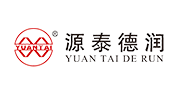1. Foreign Green Building Evaluation System
In foreign countries, representative green building evaluation systems mainly include the BREEAM evaluation system in the UK, the LEED evaluation system in the US, and the CASBEE evaluation system in Japan.
(1) BREEAM Evaluation System in the UK
The goal of the BREEAM evaluation system is to reduce the environmental impact of buildings, and to certify and reward the best performers in the design, construction, and maintenance stages by setting score levels. For ease of understanding and acceptance, BREEAM adopts a relatively transparent, open, and simple evaluation architecture. All "evaluation clauses" are classified into different environmental performance categories, making it easier to add or remove evaluation clauses when modifying BREEAM based on practical changes. If the evaluated building meets or meets the requirements of a certain evaluation standard, it will receive a certain score, and all scores will be accumulated to obtain the final score. BREEAM will give five levels of evaluation based on the final score obtained by the building, namely "pass", "good", "excellent", "outstanding", and "OutStanding". Finally, BREEAM will give the evaluated building a formal "evaluation qualification"
(2) LEED evaluation system in the United States
In order to achieve the goal of defining and measuring the "green" degree of sustainable buildings by creating and implementing widely recognized standards, tools, and building performance evaluation standards, the American Green Building Association (USGBC) initiated the writing of Energy and Environmental Design Pioneer in 1995. Based on the BREEAM evaluation system in the UK and the BEPAC evaluation criterion for building environmental performance in Canada, the LEED evaluation system has been formed.
1. Content of LEED evaluation system
At the beginning of its establishment, LEED only focused on new buildings and building renovation projects (LEED-NC). With the continuous improvement of the system, it gradually developed into six interrelated but with different emphasis on evaluation standards.
2. Characteristics of LEED evaluation system
LEED is a private, consensus based, and market driven green building evaluation system. The evaluation system, proposed energy-saving and environmental protection principles, and related measures are based on mature technological applications in the current market, while also striving to achieve a good balance between relying on traditional practices and promoting emerging concepts.
Tianjin Yuantai Derun Steel Pipe Manufacturing Group Co., Ltd. is one of the few enterprises in China that has LEED certification. The structural steel pipes produced, including square pipes, rectangular pipes, circular pipes, and irregular steel pipes, all meet the relevant standards for green buildings or green mechanical structures. For project and engineering purchasers, it is very important to purchase steel pipes that meet the relevant standards for green buildings, It directly determines the green and environmentally friendly performance of your project. If you have any questions about the green steel pipe project, please contact our customer manager immediately
(3)CASBEE Evaluation System in Japan
The CaseBee (Comprehensive Assessment System for Building Environmental Efficiency) comprehensive environmental performance evaluation method in Japan evaluates buildings of various uses and scales based on the definition of "environmental efficiency". It attempts to evaluate the effectiveness of buildings in reducing environmental load through measures under limited environmental performance.
It divides the evaluation system into Q (building environmental performance, quality) and LR (reduction of building environmental load). The performance and quality of the building environment include:
Q1- indoor environment;
Q2- Service performance;
Q3- Outdoor environment.
The building environmental load includes:
LR1- Energy;
LR2- Resources, Materials;
LR3- External environment of building land. Each project contains several small items.
CaseBee adopts a 5-point evaluation system. Satisfying the minimum requirement is rated as 1; Reaching an average level is rated as 3.
The final Q or LR score of the participating project is the sum of the scores of each sub item multiplied by their corresponding weight coefficients, resulting in SQ and SLR. The scoring results are displayed in the breakdown table, and then the environmental performance efficiency of the building, i.e. Bee value, can be calculated.
The sub scores of Q and LR in CaseBee can be presented in the form of a bar chart, while the Bee values can be expressed in a binary coordinate system with building environmental performance, quality, and building environmental load as the x and y axes, and the sustainability of the building can be evaluated based on its location.

Post time: Jul-11-2023








